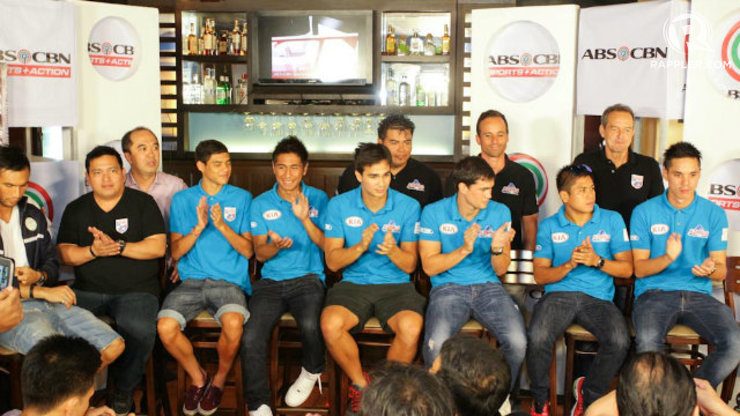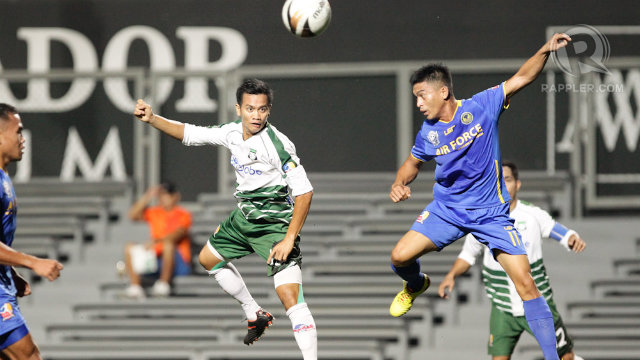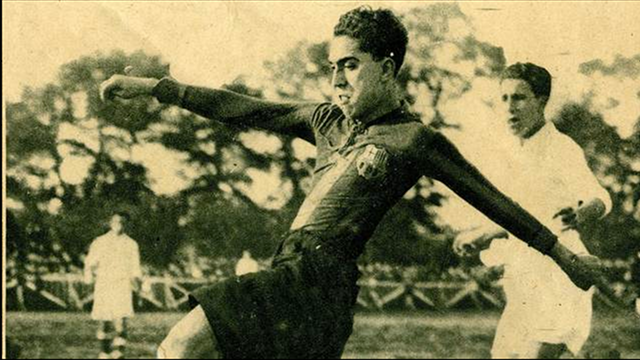SUMMARY
This is AI generated summarization, which may have errors. For context, always refer to the full article.

MANILA, Philippines – It is the most loved and watched sport in the world. Thousands and thousands of hardcore followers flock to a stadium during game day. A high profile match between two of the best teams in the world effortlessly seats around a hundred thousand fans. For those who are not lucky enough to see it live, their headcount would simply add to the 400 million global TV audience.
Believe it or not, the numbers given are the norm in football, the most dominant sport in nearly every country in the world. A game of two teams that’s composed of eleven players each, battling and outwitting each other for a grueling hour and thirty minutes. The level of play and rankings hardly have anything to do with it; Indonesia’s national football team that usually ranks in the 150s in the world, fills their Gelora Bung Karno Stadium with around eighty thousand fans during international friendlies and tournament matches like the AFF Suzuki Cup.
If other countries can do it on the regular, why can’t we?
As a kid growing up in a basketball crazed country, football used to be a sport that I never paid attention to. Each time I do my TV channel rounds and see a football match or highlight being aired, I always ask myself how it manages to draw such a huge crowd – a significantly bigger audience than basketball. It was a question that’s been instilled in my mind for many years because the sport never had any sort of appeal to me.
Talking to friends about the sport consistently raised similar issues that brings us to the same page; the sport is boring and teams doesn’t score enough points to make a game interesting. I can still clearly recall when I was a 17-year-old college student and a “tisoy” classmate uttered the name David Beckham in a class of 30. Of all the people in the room, only two of them knew who Beckham was, the other wasn’t even aware that Beckham plays football.
Other than that, football always carried a “sport of the rich” reputation up to this day. In the Philippines, kids and adults alike will try to build a basketball court/ring with anything they can gets their hands on. A few pieces of beaten up wood and a bent rusty metal put together then nailed on a random tree somewhere becomes a basketball hangout for most. It’s one of the reasons why the country literally has a basketball “court” on almost every street of Manila.
You’ll never see this kind of setup in football. Unless you study in an upper class school or travel to the nearest sports complex, a football pitch is as good as invisible. Why aren’t they more prevalent? A pitch is not only costly to make and maintain after all, it also takes too much space. At least that’s what I was once told by a village coordinator when I dared ask why they didn’t put a pitch in the park.
It was not until 2010 that I gave football a chance. It was quite ironic because reports regarding the Philippine Azkals’ AFF Suzuki Cup campaign were all over a boxing website for a number of days already yet I hadn’t been reading nor paying attention to it.
A headline about the Azkals beating a higher ranked and former champion in Vietnam lit my interest like it never did before. A visit to Youtube made me a witness to the intensity, excitement and fun a football match and crowd brings to the table. I was hooked in a matter of seconds.

My sudden football addiction could either be attributed to nationalism due to Azkals’ historic run or the game was simply that great. The nights and hours that I used to spend in studying and watching past boxing fights were replaced by football. It didn’t take long for me to realize that yes, at 23-years-old, I was finally a football fan.
Rich football past
The Philippine Football Federation dates as far back as 1907. As a Spanish colony, the primary sport of the Philippines was football. The first ever football tournament in Asia, the Far Eastern Games, was held in the country in 1913 where we beat China for the championship with a scoreline of 2-1.
One of the most legendary figures in football history was born in Iloilo City. Paulino Alcantara, known as “The Net Breaker,” scored 369 goals in 357 appearances with one of the most successful and celebrated clubs in the world, FC Barcelona. Alcantara would later hold on to the club’s highest goal scoring record for 87 years.
The Philippines’ footballing ways started to diminish when America took over the country as their new colonial rulers. Little by little, football was ignored and overlooked by sponsors and the government itself. It was also throughout those years that basketball was introduced by the Americans, a sporting frenzy that survives until this very day.

Philippine football’s biggest recorded win was a whooping 15-2 scoreline over Japan in 1917. Fast forward to the latest 2014 FIFA rankings, Japan is at #46 in the world while the Philippines is at 129. Worse, we can’t even get to play them anymore due to qualification failures. The latest chance of playing against our old rivals was in the recently concluded AFC Challenge Cup in May. A win in the said tournament guaranteed the last spot grouped with Japan in the 2015 Asian Cup but a 1-nil defeat against Palestine in the finals spoiled our plans. How times have changed.
Getting a football team to perform on the next level doesn’t happen overnight. The Philippine Azkals had to scout and get reinforcements from half-blooded Pinoys overseas to take a huge leap in terms of level of play. While many fans appreciate the players, the team also received their share of scrutiny for recruiting “imports.”
For the educated fans though, it is more than clear that none of the Azkals are imports for none of them have been naturalized. Even the president of this country is not a pure blooded Filipino, so why make such an outrageous demand for football players who are willing to sacrifice so much and play for the flag? If Gilas Pilipinas gets a pass for naturalizing Americans, why scrutinize overseas-based football players? Are the bias and double standards somehow related to Filipinos’ love for basketball.
Grassroots program and a competitive local football league are definitely two of the many ways to reach our righteous football glory. Grassroots won’t produce results overnight, but molding and discovering young talents would serve as an investment and could possibly pay dividends in the future.
A homegrown 9-year-old named Sandro Reyes (now 11) made it to the FCB Escola in Spain through a scholarship, an academy that groom kids to football stardom. For all we know, the next Philippine football superstar is just right around the corner waiting to be discovered.
Though not attracting big crowds yet compared to other countries, the Philippines’ premier football league known as UFL (United Football League) has been on a steady rise since the Azkals sparked the general public’s interest in 2010. The league ups player levels and keeps them in shape for international duties.
Azkals’ new head coach Thomas Dooley showed the avid football followers the importance of a local league in the Challenge Cup last month by regularly fielding half of the team with local players. The cohesion and fitness displayed was a testament that the UFL system is working and could boost our national team moving forward. (RELATED: Corruption, Premier League worship hinder Asian football)
Football has been snubbed for so many years and we can’t expect an improvement in a heartbeat so players themselves tend to remind the public to manage their expectations. Though height can be an advantage in some positions, football is the sport where Filipinos’ shortness has minimal baring – as proved by the 5-foot-7 inches Lionel Messi, the world’s current best footballer.
The sport needs a bigger following and promotion, and the fans and media can take it there. FIFA standard stadiums must be built and ticket prices must be affordable to all regardless if it’s a local club game or an international match. It is easier said than done, we can’t go back in time, but if we can at least make the sport as popular as the PBA, then we can definitely get to where we want our football to be. – Rappler.com
JM Siasat is a sports journalist based in Manila, Philippines. He can be reached at jmsiasat@ymail.com. Follow him on Twitter @jmsiasat
Add a comment
How does this make you feel?
There are no comments yet. Add your comment to start the conversation.